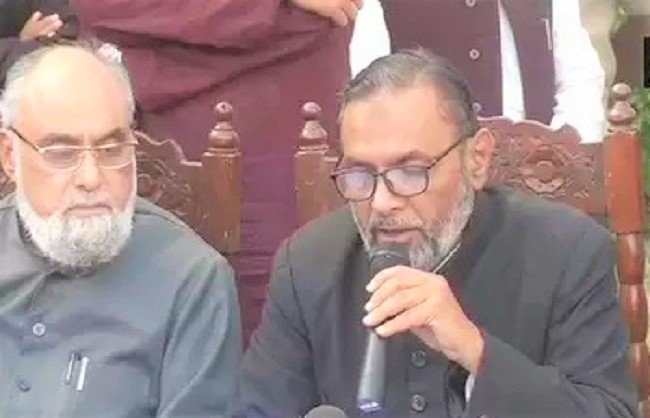
Lucknow, November 17: The All India Muslim Personal Law Board (AIMPLB) met on Sunday at Mumtaz College to discuss the issue of filing a review petition against the Supreme Court verdict on the Ayodhya case. It was decided at the meeting that a reconsideration petition be filed against the ‘Supreme’ decision. It was also said in the meeting that according to Sharia, Muslims cannot transfer mosques, so there is no question of taking alternative land.
Giving information about the decisions taken at the meeting of the working committee of the board, the board secretary Zafaryab Jilani told the press conference that a petition for reconsideration, of the Supreme Court’s decision on Ayodhya case delivered on November 9, will be filed. The board also said that Muslims cannot accept any other land in exchange for the mosque land.
Maulana Arshad Madani, national president of Jamiat Ulema Hind, said that the Supreme Court has given a solution on the Ayodhya case, while the Jamiat Ulema Hind had been fighting a legal battle for justice for years. He said that in a decision based on more than a thousand pages, the court accepted most of the arguments of Muslims and there are still legal alternatives. He said that the court made it clear from the report of the Department of Archaeology that the mosque was not built by breaking a temple and in 1949 the statue was illegally placed in the outer courtyard of the mosque and then transferred to the inner dome. , While the procession of Namaz continued there till that day.
Madani reiterated that the court said that the court also believed that from 1857 to 1949, if the Muslim continued to pray there, then the decision to give the mosque in the mosque where it is recited for 90 years is beyond comprehension.
Madani said that rarely the decisions on reconsideration petition are changed but still Muslims should use the legally available options for justice. Putting a question mark, he said that if the mosque had not been demolished, would the court have asked to break the mosque and build a temple?
Several top officials of the organization were not in favor of taking up the matter in the meeting, but many were in support of filing a review petition. A five-member panel was formed on behalf of Jamiat due to lack of consensus. It included Jamiat chiefs Maulana Arshad Madani, Maulana Asjad Madani, Maulana Habibur Rahman Kasami, Maulana Fazlur Rahman Kasami and lawyer Ejaz Maqbool.
It was also said after the board meeting that Muslims would not accept land in lieu of mosque land. The board said that the judges did not take care of the Waqf Act 1995 using Article 142.
AIMPLB told the basis of review petition
1. The building of the Babri Masjid was built by Babur Commander Mir Baqi in 1528 as confessed by the Supreme Court.
2. According to the evidence given by the Muslims, the three-dome building of the Babri Masjid from 1857 to 1949 and the interior of the mosque have been in the possession and use of the Muslims. This has also been accepted by the Supreme Court.
3. The last Namaz at Babri Masjid was read on 19 December 1949, the Supreme Court has also considered it.
4. The statue of Ram placed under the main dome of the Babri Masjid on the night of 22 and 23 December 1949 is also considered illegal by the Supreme Court.
5. No proof of Ram Janmabhoomi or worshiped there under the dome land in the middle of Babri Masjid.




